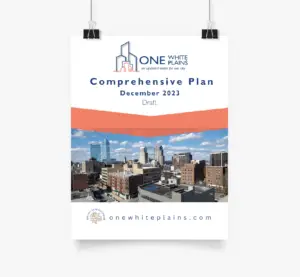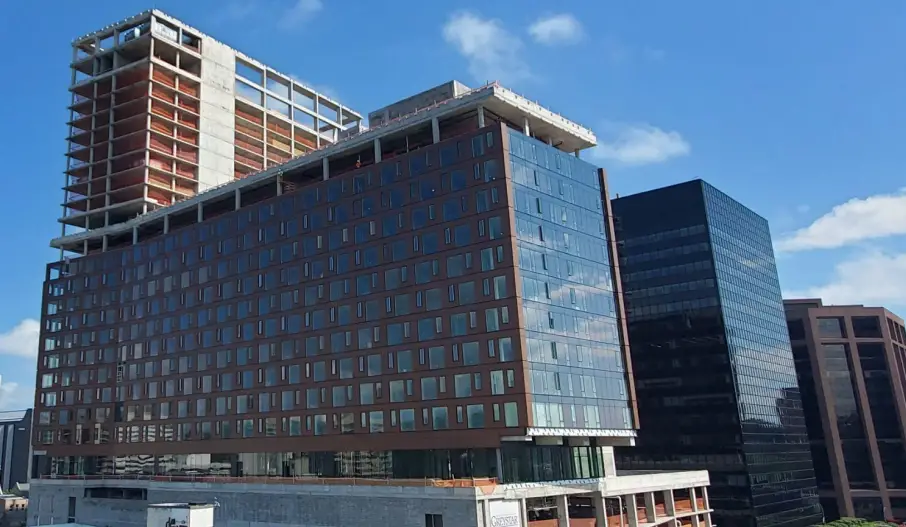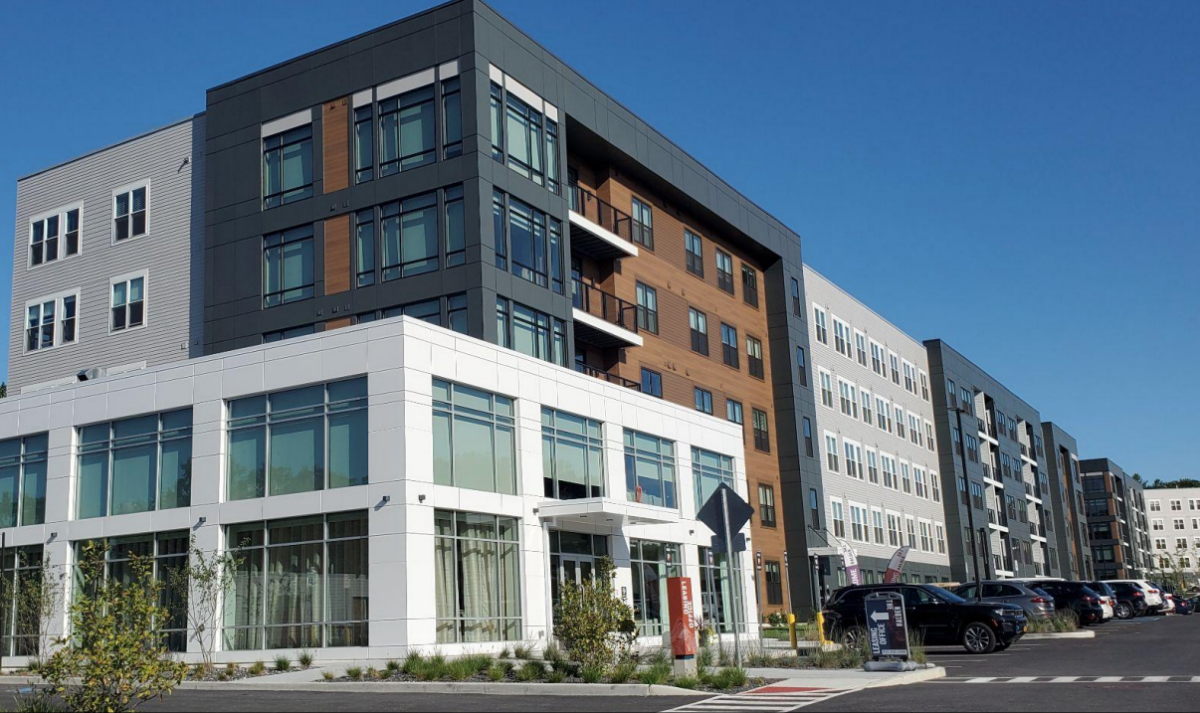As winter blended into spring, the more than two-year effort to create an updated White Plains Comprehensive Plan was reaching the point at which the city’s Common Council would be called upon to vote on whether to adopt it. The council had held two sessions in a public hearing during February and March and then closed the hearing. Most of the comments from the public were negative about the draft. The document is being examined for possible changes and revisions could become public next month.
The city’s existing Comprehensive Plan dates from 1997 with updates in 2006 and 2012. There was a consensus that it was time for a complete rewrite rather than just another updating.

A draft document of more than 400 pages under the umbrella title “One White Plains” had been prepared by a 15-member Comprehensive Plan Committee working with the city’s planning staff and four consultants: BJF Planning; Urbanomics; Streetsense; and Ramboll. The public was invited to provide input through a variety of public meetings and outreach efforts. An estimated 2,000 public comments had been received.
The draft Comprehensive Plan describes itself as “a long range planning document that provides policy guidance for future growth and development, housing, infrastructure, and public services. The plan provides the foundation for future city decisions regarding development and zoning, capital spending, and general policy. In short, the plan identifies strategies to make the city a better place for years to come.”
The draft devised six elements that would lie at the heart of the document:
- connectWP, that provides an accessible, safe, pedestrian and multi-modal transportation network in White Plains;
- greenWP, that identifies and supports environmental resources and green initiatives;
- liveWP, that promotes livable neighborhoods that offer a variety of housing options while also balancing an appropriate mix of neighborhood uses that support diverse needs of the community;
- playWP, related to parks, recreation and cultural programming;
- strengthen WP, that addresses the physical and social infrastructure needs of the city;
- workWP, that supports a diverse economy, attracts jobs and strengthens the role of the city as a regional economic hub.
City Planning Commissioner Christopher Gomez had described the content of the draft as basically suggestions covering broad ideas of what would be possible. Some activists in the city’s single-family neighborhoods, however, saw in the plan a change in philosophy from previous comprehensive plans and from the hallmark of White Plains administrations, which has been protecting the existing character of the neighborhoods. Neighborhood protection was done through zoning and the practice of keeping dense and high-rise developments downtown.


The draft plan was seen by many as opening the door for developers who may want to build multifamily and high-rise projects in single-family neighborhoods by suggesting that zoning changes could be allowed for single-family-zoned parcels of over five acres. When residents of one neighborhood learned that a developer had already started buying up single-family homes to assemble a large parcel, criticism of the draft plan soared. One resident, Anthony Fiorenza, gathered signatures on a petition expressing concern about the potential for a new Comprehensive Plan to become a justification for dense developments in single-family neighborhoods.
The White Plains Council of Neighborhood Associations sent a letter signed by President Michael Sanchez that had the support of 11 neighborhood association presidents outlining their concerns to Mayor Tom Roach and members of the Common Council.
“Preserving the integrity of single-family neighborhoods is crucial as sacrificing them would be detrimental to the long-term viability of White Plans,” the letter said. It also expressed concerns about the draft plan promoting accessory dwelling units that could be built onto single-family homes to convert them into multifamily homes.


In another letter to the mayor and council, a resident noted that when the 1997 Comprehensive Plan was being created numerous citizen committees were formed undertaking analysis of key issues such as housing and open space, a technique that was missing during creation of the new draft.
Most of those making comments during the two sessions of the Common Council’s public hearing on the draft were critical of the document. As an example, Ron Rhodes, a 45-year resident of the Gedney Farms section of White Plains, said that “tinkering round with the residential area” makes him nervous.
“If it’s not broken let’s not fix it,” Rhodes said. “Years go when we worked on the Comprehensive Plan changes and revisions it was strictly residents from all neighborhoods working together with other residents on numerous committees without city staff and outside consultants inserting their own agendas and wish lists into the process as appears to have happened now.”.
During a Planning Board meeting that discussed the draft, John Ioris, chairman of the Planning Board said, “I think one of the frustrations that a lot of the people, and when this was made public my phone lit up, a lot of people seem to feel that the zoning regulations in the city are a living thing and they can be changed at the drop of a hat for any particular reason and I think that’s why some of the initiatives in here frighten people. I can’t be specific about what we should change but it’s not the easiest planning document to use. It’s a little bit more of a social engineering document than I would like to see.”
During the public hearing, Mayor Roach said that the draft Comprehensive Plan does not apply to any particular development or site and hinted that there may be changes before a final version is put before the council for a vote.
“It makes recommendations, which can be adopted by the council or not adopted by the council,” Roach said. “Even if this document is passed it doesn’t mean that any of the provisions here will ever be used. Nothing is carved in stone.”



















